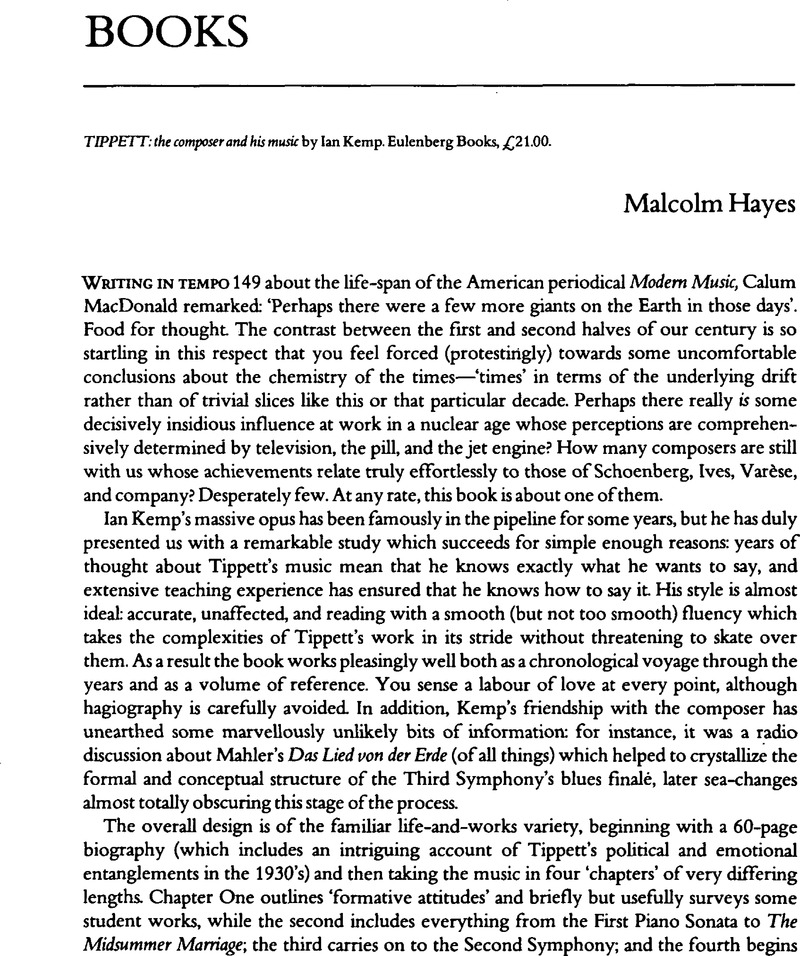No CrossRef data available.
Article contents
Books
Published online by Cambridge University Press: 04 February 2010
Abstract

- Type
- Books
- Information
- Copyright
- Copyright © Cambridge University Press 1985
References
page 35 note 1 See Roger Heaton on ‘Schiffon Carter’. Contact No. 28.
page 35 note 2 The articles by Roger Smalley in Tempo 80 & 86 are exceptional.
page 35 note 3 Perhaps the finest introduction to the world of Robbe-Grillet is the novelist's own study Snapshots and Towards a New Novel (John Calder 1963).Google Scholar
page 39 note 1 Though the situation is improving Supraphon (apparently) have embarked upon a complete recording of the symphonies. The first release, of the Third performed by the Slovak Philharmonic under Libor Pěsek (1110–3394 G), is not perhaps the ultimate in sonorous glamour, but is paced and played with an ardent musicality that bodes well for any further issues.
page 40 note 2 Bill Hopkins ‘Schreker, Schmidt, Webern, Zemlinsky,’ TEMPO No. 127, December 1978, 0373.
page 40 note 3 Hans Keller, Letter to the Editor, TEMPO No. 128.
page 42 note 1 The dramatic tension of this whole passage, from fig.44 to the recapitulation of the allegro, is very close to Salome. compare the bass drum roll in bars 364–70 with the famous roll preceding the appearance of the head of Jochanaan (figs 313–4)—though Mahler would not have seen the full score at the time he composed it.
page 42 note 2 Alma says they both found Elektra boring. This is surprising, if it is true; but Strauss did write in his diary: ‘My boldest passage harmonically is perhaps Clytemnestra's day-dream narrative where the pedal-note has the function of nightmare. A piece which even Mahler (it was the last thing I played to him) could not accept’. This may well have been so: Strauss here is using an expressionist language for what Mahler, with his puritanical dislike of ‘decadence’, may have considered an illegitimate purpose. Nevertheless I cannot believe that the harmonic language of Elektra, more strikingly original than that of Salome, did not impress Mahler; and I think it may not be coincidence that the famous nine-note dissonance in the Tenth Symphony incorporates the Elektra ‘blood’ chord, and can be seen as a further extension of Strauss's experiments with superimposed triads in this, his most radical work.


